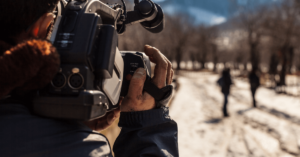The value of a documentary doesn’t end when the credits roll. Every stage of the documentary process — from planning to filming to editing — generates content that can be repurposed, helping your message reach new audiences and sustain engagement long after the initial release. Here’s how to maximize your reach through strategic repurposing of documentary content for social media.
Introduction: Going Beyond the Final Film
Creating a documentary film is a massive investment in storytelling, capturing hours of impactful moments, insightful interviews, and authentic behind-the-scenes footage. But often, only a fraction of that content makes it into the final cut. By repurposing unused content, you can keep the conversation alive, reach a wider audience, and transform your film into a powerful, ongoing social media campaign.
Content Opportunities at Every Stage of Production
Each stage in the documentary production process offers unique content opportunities for social media. Let’s break down how you can maximize content creation during pre-production, production, and post-production.
1. Pre-Production: Building Anticipation
During pre-production, capture the excitement around the project’s inception. Share photos from planning meetings, location scouting, and initial interviews. This “behind-the-scenes” content is perfect for Instagram Stories, LinkedIn posts, or Facebook teasers, where audiences can get a preview of what’s to come.
2. Production: Showcasing the Story in Action
As the camera rolls, you have an opportunity to capture engaging, in-the-moment content. B-roll footage, candid shots, and short snippets from interviews make excellent material for platforms like YouTube, TikTok, and Instagram. Behind-the-scenes footage can also help humanize the project, adding a personal touch that audiences connect with.
3. Post-Production: Highlighting the Process
Post-production offers plenty of opportunities for content creation, from editing sneak peeks to sharing commentary from directors or editors. Moments that didn’t make it into the final film can become engaging social media content, providing insights into the filmmaking process and showing the dedication behind the project.
Using Extra Content for Social Media Reach
Repurposed content isn’t just filler; it can drive substantial engagement on social media platforms. Here’s how you can use extra content to enhance reach and connect with audiences:
Short Clips from Interviews
Interview clips are a goldmine for impactful social media posts. Pull memorable quotes or insights from interviews and format them as standalone posts. For instance:
- Instagram Reels and Stories: Short, impactful clips work well for these formats, driving engagement with powerful visuals and concise messaging.
- LinkedIn and Twitter: Use professional or thoughtful quotes from interviewees to create shareable posts that highlight key themes from your documentary.
Behind-the-Scenes Footage
Audiences love seeing the process behind the final product. Share clips of your crew setting up shots, rehearsing interviews, or scouting locations. Behind-the-scenes footage builds a connection between your team and the audience, adding authenticity to the final story.
B-Roll for Visual Interest
Unused b-roll footage is perfect for adding visual variety to blog posts, YouTube videos, and even ads. Scenic shots or action moments can serve as striking visuals, drawing viewers in and setting the tone for your brand. Repurposing b-roll also helps extend the documentary’s visual appeal across platforms.
Maximizing Marketing Potential: A Consistent Content Plan
To truly extend your reach, integrate repurposed content into a well-planned social media strategy. Here’s how to maximize your documentary’s marketing potential by maintaining a steady content stream:
Create a Content Calendar
Organize your content release schedule around key themes from your documentary. For example, align interview snippets with themes relevant to trending topics on social media. Scheduling posts regularly builds anticipation and keeps your audience engaged over time.
Leverage Multi-Platform Reach
Every platform has unique strengths. Use LinkedIn to share professional insights from your documentary, Instagram for personal stories and candid moments, and TikTok or YouTube Shorts for fast-paced, visually engaging clips. This multi-platform strategy ensures that your content reaches diverse audiences where they are most active.
Engage with Your Audience
Encourage viewers to comment, share, and ask questions about your documentary. Use interactive features like polls, Q&A sessions, or even live-streamed behind-the-scenes moments. Audience engagement helps to boost visibility and drives organic reach through shares and word-of-mouth.
Conclusion: Extending Your Documentary’s Lifecycle
Repurposing content from your documentary allows you to amplify your message, broaden your reach, and create lasting engagement with your audience. A strategic, multi-platform approach enables your documentary to live on beyond its initial release, building momentum and connecting with audiences over time. By unlocking the full potential of your documentary content, you transform a single film into a powerful, ongoing social media campaign, extending your impact far and wide.
Final Tip
When planning your documentary, think ahead about the potential for repurposing content. Capture diverse perspectives, visually compelling b-roll, and behind-the-scenes moments that will add depth to your social media campaign. With the right approach, your documentary will be more than a film—it will be a long-lasting story that resonates across multiple channels.






